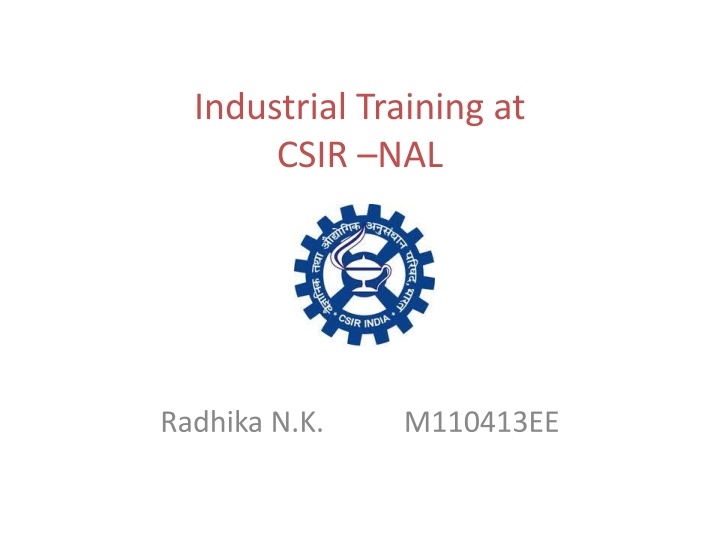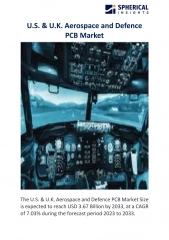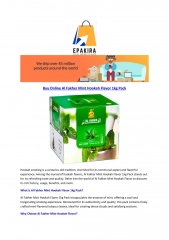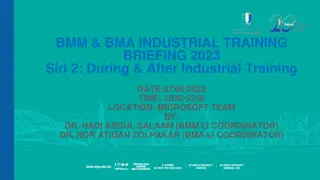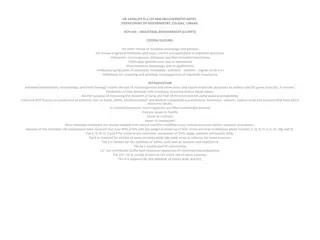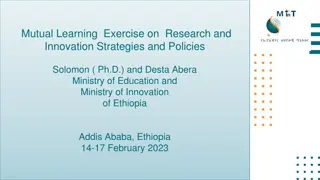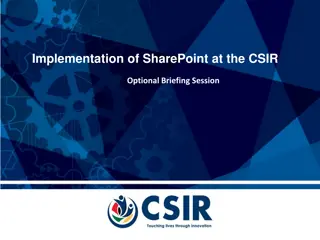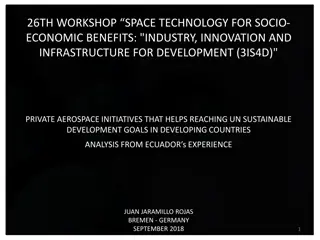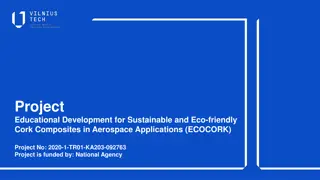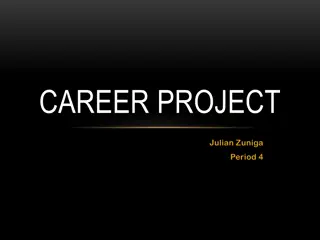Industrial Training at CSIR NAL - Premier Aerospace Research Institute
Company profile of National Aerospace Laboratory (NAL) under CSIR, established in 1959 in Bangalore. Explore facilities visited during industrial training, focus on carbon fiber technology, and the process of manufacturing carbon fiber at CSIR NAL.
Download Presentation

Please find below an Image/Link to download the presentation.
The content on the website is provided AS IS for your information and personal use only. It may not be sold, licensed, or shared on other websites without obtaining consent from the author.If you encounter any issues during the download, it is possible that the publisher has removed the file from their server.
You are allowed to download the files provided on this website for personal or commercial use, subject to the condition that they are used lawfully. All files are the property of their respective owners.
The content on the website is provided AS IS for your information and personal use only. It may not be sold, licensed, or shared on other websites without obtaining consent from the author.
E N D
Presentation Transcript
Industrial Training at CSIR NAL Radhika N.K. M110413EE
Company profile National Aerospace Laboratory (NAL) - premiere research institute under CSIR Established : 1959 Headquarters: Bangalore Mission: -Development of national strengths in aerospace sciences and technologies, infrastructure, facilities and expertise -Advanced technology solutions to national aerospace programmes. -Civil aeronautics development Logo
Facilities visited Industrial Fibre Research Facility (IFRF) Flight Mechanics and Control Division (FMCD) Aerospace Electronics and Systems Division (AESD) Advanced Composites Division (ACD) Electrical Division
IFRF Indigenous technology for manufacturing carbon fibre Pilot plant with capacity 20 TPA. Technology transferred to Kemrock Industries and Exports Ltd. (KIEL) in 2010 India s first and only commercial carbon fibre manufacturing plant with 350 TPA capacity by KIEL Current focus: Higher modulus carbon fibre for space applications.
Carbon fibre Fibres 5-10 m in diameter made mostly of carbon atoms High tensile strength High modulus Low density Reasonable cost high chemical resistance high temperature tolerance low thermal expansion
The Process Polymerization section Acrylonitrile +co monomers Polyacrylonitrile (PAN) Spinning section PAN stretched and spun into fibres Heat treatment section PAN carbon fibre
Polymerization section Acrylonitrile + comonomer CSTR Monomer stripping Centrifuge feed tank Rotary Vaccum Paddle dryer Dry powder
Spinning section Dry polymer Granulator Spin dope (60-65oC) Spinnerette Coagulation bath(30oC) Rollers (stretching) Drying and winding(135oC)
Heat treatment section PAN precursor Stabilization Graphitization Surface treatment Sizing bath Carbon fibre
Stabilization Oxidation in multizone oven 220oC - 300oC Line speed 40-50m/h Product :PANOX PANOX fire resistant material Roller speeds controlled by AC drives Carbonization L T furnace Filled with nitrogen 6 temperature zones 300oC - 900oC gradually Heating element Kanthal PID control for temperature
High temperature processing As temperature increases, modulus increases Strength maximum at 1500oC 2 individually controlled zones with graphite elements situated above Furnace filled with nitrogen Cooling jackets near bus bars and power feeders (50oC)
Surface treatment 3 electrolytic treatment cells 2 wash cells Oil heated drying rollers Sizing bath immersion in bath of 0.5% epoxy resin
Plant Control DCS ABB Freelance 2000 series 1000 inputs AF800 series controllers are used Protocols Operator, Process and Engineering stations linked by Ethernet. CPU modules and I/O modules linked by CAN Modbus links certain subsystems via RS485 interface
Control builder F is the software used for configuration of DCS. Controller tuning done mostly on trial and error basis. No comprehensive tuning strategy executed as yet.
Energy saving measures Electric power APFC panel of 360 kVAR installed. Pf close to unity Thermal power 3TPH boiler used for process steam at 7 kg/cm2 Demineralized water used to prevent scaling Economizer used to transfer heat from flu gas to feed water.
Proposals Implement Model predictive control as tuning strategy Bottoming cycle Cogeneration scheme Hindrances: Intermittent nature of plant operation Toxic nature of flue gases Research facility
